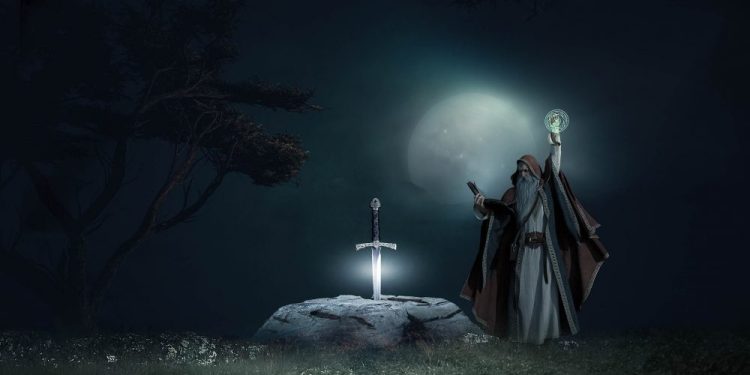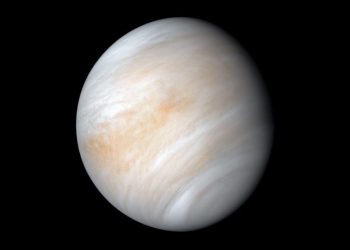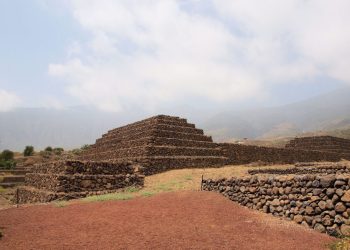Merlin is the name of a sorcerer mostly mentioned in the various versions of the legend of King Arthur. Just like the actual mythical king, there is no historical evidence of the existence of the great sorcerer apart from ancient legends and mythical texts.
The origin of the figure known as Merlin, however, began a lot earlier in history in connection to ancient Celtic mythology. This is why we consider it important to bring up some facts about Merlin and the famous legends that go hand in hand with his name.
1. The earliest mention of the name Merlin was in 1136 by the Welsh monk Geoffrey of Monmouth, author of “A History of the Kings of Britain”
All legends of Merlin go way further back in time but the earliest documented mention of the name was in 1136. While Geoffrey of Monmouth’s Historia Regum Britanniae is credited with the first recorded mention of Merlin, it’s essential to delve into the sources that may have inspired Geoffrey. Scholars suggest that Geoffrey amalgamated tales of earlier figures, such as the Welsh prophet Myrddin Wyllt and the Romano-British leader Ambrosius Aurelianus, to craft the character of Merlin. This synthesis not only enriched the Arthurian legends but also provided a bridge between Celtic mythology and medieval literature.
2. According to one of the most mythical legends, Merlin’s mother fell in love with a demon who became his father
It is said that Merlin’s father was not a human being but instead, his mother fell in love with a demon and carried his son. This is where Merlin inherited his powers from. The narrative of Merlin’s demonic parentage serves to explain his supernatural abilities and complex nature. In some versions, his mother is described as a noblewoman or even a nun, emphasizing the contrast between purity and the infernal. This origin story reflects medieval beliefs about the interplay between the divine and the diabolical, and it underscores the era’s fascination with figures who embody both good and evil.
3. Geoffrey of Monmouth wrote that Merlin helped build Stonehenge
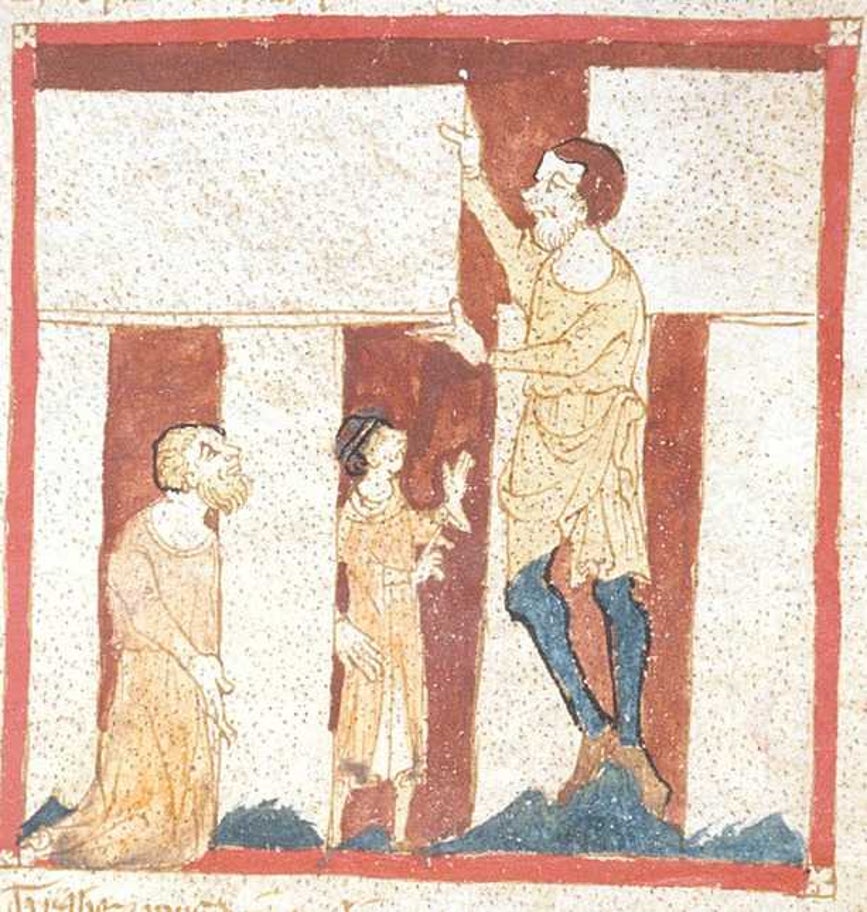
The illustration you see above is from the 12th-century translation called Roman de Brut by the poet Wace and presents Merlin at the Stonehenge site being helped by a giant. Geoffrey of Monmouth was the first to mention that Merlin helped in the building of the monument, attributing it to Merlin’s magical prowess, suggesting he transported the stones from Ireland with the aid of giants.
This tale, while mythical, offers insight into medieval attempts to explain prehistoric monuments whose origins were shrouded in mystery. To me, it is nothing more than a popular myth. After all, Stonehenge has been dated thousands of years earlier than the time of Merlin.
4. The sorcerer became Arthur’s mentor after his fathers’ passing
Before he was Arthur’s mentor, Merlin guided his father King Uther during his reign. Once he passed away, Merlin took Arthur under his wing and guided him throughout his path to the throne of Camelot.
Merlin’s mentorship of Arthur is central to the Arthurian legends. Beyond guiding Uther Pendragon, Merlin orchestrated Arthur’s conception by enabling Uther to enter Tintagel Castle in disguise – a deed that led to Arthur’s birth. This act underscores Merlin’s influence over the royal lineage and his commitment to the prophecy of a united Britain under Arthur’s rule.
5. The earliest direct mention of Merlin as Arthur’s advisor is from the 15th century
Legends and myths surrounding Merlin and Arthur were in existence for centuries but it was the English writer Sir Thomas Mallory who directly showcased them as companions. He is the main reason why the Arthurian legend gained such cultural importance in Britain.
While earlier texts reference Merlin, Sir Thomas Malory’s Le Morte d’Arthur, compiled in the 15th century, provides a comprehensive portrayal of Merlin as Arthur’s advisor. Malory’s work synthesized various French and English sources, solidifying Merlin’s image in popular culture. This compilation played a pivotal role in shaping the enduring narratives of the Arthurian legends.
6. It was the sorcerer that told the young Arthur to try and draw the sword in the stone often mistaken for Excalibur
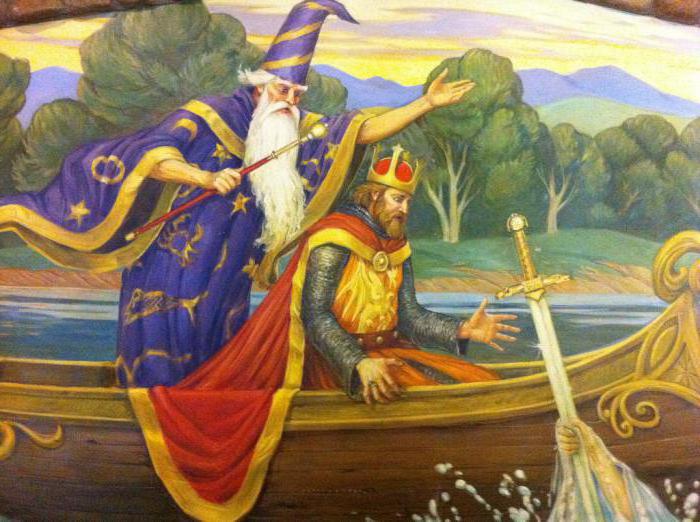
The Sword in the Stone is another famous legend revolving around King Arthur but is also subject to many misconceptions. One of the most common ones is that the sword in the stone is the famous sword that goes under the name Excalibur.
On the contrary, Excalibur is a sword that Arthur obtains a lot later but according to the legends, he truly took the sword in the stone effortlessly which meant that he is the only true heir to the tone.
The distinction between the Sword in the Stone and Excalibur is a nuanced aspect of Arthurian legend. In some versions, the Sword in the Stone signifies Arthur’s rightful sovereignty, while Excalibur, bestowed by the Lady of the Lake, symbolizes divine kingship and power. Merlin’s guidance in these episodes underscores his role in legitimizing Arthur’s rule and connecting him to mystical forces.
7. According to certain legends, Merlin had shape-shifting abilities
Shape-shifting has to be one of the greatest powers one could have. According to some of the legends, it was one of Merlin’s main abilities and he utilized it well.
Merlin’s purported ability to change form aligns him with other mythic figures possessing shape-shifting powers, such as the Celtic god Lugh. This trait reflects themes of transformation and adaptability, essential qualities for a sorcerer navigating the complexities of human and supernatural realms. Stories of Merlin’s transformations serve to illustrate his mastery over nature and the fluidity of his identity.
8. According to other legends, he could transport himself or other objects across the country
Another one of Merlin’s famous alleged abilities was teleportation. It is said that he was able to transport himself through incredible distances or teleport certain objects. There is another controversial myth that he transported the stones that made the Stonehenge monument with his magic which, of course, is a debunked myth since the site was later dated to thousands of years ago.
9. The sorcerer was not named Merlin in the original legends but this variation became widely accepted after the popularization of the Arthurian legend
The original name given to the famous figure was Myrddin but he also received several different surnames depending on who wrote the sequential legends. For example, Myrddin is regarded as a toponym for his alleged place of origin – Carmarthen. This name, however, was often accompanied by a second name – Myrddin Wyllt (Merlin the Wild) or Myrddin Emrys (named after the Sun God worshipped by the Celts).
10. In one legend, Merlin was captured by the British King Vortigern for his special blood
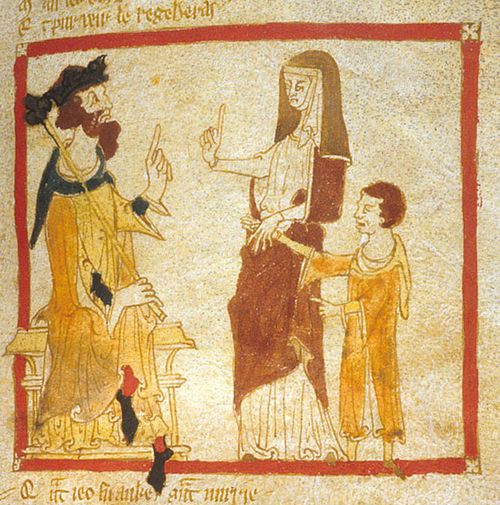
I mentioned earlier that one legend suggests that Merlin’s father was a demon or in fact, the devil himself. A subsequent myth tells the story of King Vortigern who was unable to build a strong fortification to stop invaders. His magicians told him that he needed to sprinkle the blood of a fatherless youngling on the stones and only then, it would have made the structure unbreakable.
Well, word of the young Merlin reached the King and he sent his envoys to capture him. Originally, he was supposed to sacrifice the boy but when he saw that many of his prophecies came true, he left him alive.
Join the discussion and participate in awesome giveaways in our mobile Telegram group. Join Curiosmos on Telegram Today. t.me/Curiosmos



